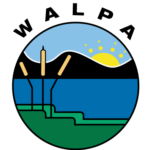Register now for the Western Washington Lakes Workshop June 11! FREE and online!
Join us for the FIRST annual Western Washington Lakes Workshop! This online event, slated for Saturday, June 11, from 9-noon, is perfect for lake-area residents and recreators interested in learning more about lake ecosystems and connecting with lake communities across Western Washington.
Some good news and some bad news from Washington’s 2022 legislative session
by Matt Colston, WALPA President-Elect, WALPA Legislative, Bylaws, and Policy Chair, Puget Sound Partnership
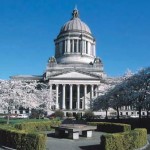 First, I wanted to give readers some quick context for this year’s legislative session. It was a supplemental year, meaning that the session was shorter and the ambition of the session smaller. That being said, for those of us focusing on the environment, from lakes and streams to rivers and the Salish Sea, there were some very big opportunities and disappointments that have played out this spring. This session was the classic example of “I have some good news and I have some bad news.”
First, I wanted to give readers some quick context for this year’s legislative session. It was a supplemental year, meaning that the session was shorter and the ambition of the session smaller. That being said, for those of us focusing on the environment, from lakes and streams to rivers and the Salish Sea, there were some very big opportunities and disappointments that have played out this spring. This session was the classic example of “I have some good news and I have some bad news.”
Save October 19-21 for the 35th annual WALPA conference!
Plan to join us in Richland this October for the annual WALPA conference! This year’s theme, “Adaptive Lake Management to Prepare for the Future: The Future Ain’t What it Used To Be,” was chosen to highlight adaptive efforts to manage, protect, and restore our lakes.
Wednesday, October 19 will be a full day of workshops, the cost of which is included in conference registration. Learning sessions are slated for all day Thursday and half of Friday.
Ecology continues to study PFAS entering Lake Washington
by Siana Wong, WA State Department of Ecology/Natural Resource Scientist
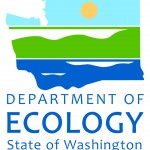 The Washington State Department of Ecology is conducting a study that assesses pathways and sources of a large group of man-made chemicals called per- and polyfluoroalkyl substances (PFAS) to Lake Washington.
The Washington State Department of Ecology is conducting a study that assesses pathways and sources of a large group of man-made chemicals called per- and polyfluoroalkyl substances (PFAS) to Lake Washington.
Per- and poly-fluoroalkyl substances (PFAS) are chemicals used in many industrial and consumer products, like those with non-stick or stain-proof coatings, and fire-fighting foams. PFAS have been manufactured since the 1950s, but manufacturers began phasing out certain compounds – like perfluorooctane sulfonate (PFOS) and perfluorooctanoic acid (PFOA) – in the 2000s over concerns about their toxicity and persistence in humans and the environment. PFAS are released to the environment through manufacturing emissions and through the use or disposal of products containing PFAS. As a result, PFAS are widespread in the environment and some compounds, like PFOS, build up in aquatic food webs leading to elevated concentrations in predator fish species.
Dear Dr. Waterline:
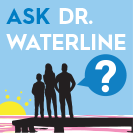 I am always hearing about harmful algae blooms and how I should be aware of them and report them. But… how do I identify a harmful algae bloom?
I am always hearing about harmful algae blooms and how I should be aware of them and report them. But… how do I identify a harmful algae bloom?
Signed, Wondering
The long history of cyanobacteria in Spanaway Lake, Pierce County
by Will Hobbs, Washington State Department of Ecology
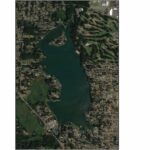 The sediments that deposit on the bottom of lakes contain information about past lake conditions and changes in lake water quality. In general, lake sediments are reliably layered year after year. To obtain information about the lake, we can sample those layers intact and establish the approximate age of each sediment layer (Figure 1). Once the sediment is dated, we can analyze the sediments for other biochemical and geochemical remains to get a picture of past lake water quality and biological activity.
The sediments that deposit on the bottom of lakes contain information about past lake conditions and changes in lake water quality. In general, lake sediments are reliably layered year after year. To obtain information about the lake, we can sample those layers intact and establish the approximate age of each sediment layer (Figure 1). Once the sediment is dated, we can analyze the sediments for other biochemical and geochemical remains to get a picture of past lake water quality and biological activity.


